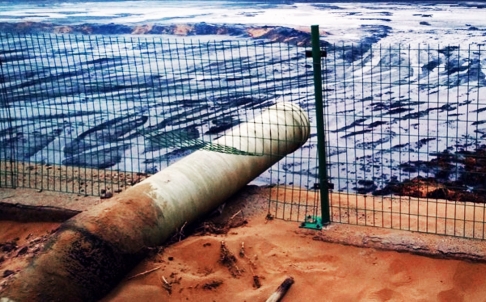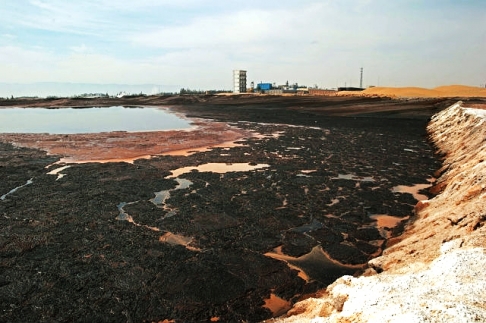Authorities in Inner Mongolia are
investigating reports that illegal
industrial waste water is once again
being discharged into the southern
Tengger Desert.
Experts fear the pollution could
permanently damage groundwater
sources.
Citing an official at Tengri
industrial park, The Beijing News
reported the park and the local Alxa
League government were
investigating.
According to a report in the paper
at the weekend, chemical engineering
factories at Tengri industrial park
had been pumping polluted water into
the desert.
The official, surnamed Chen, told
the paper local authorities had
closed 15 factories in 2012 after
state television unveiled a similar
case. But a lack of supervision by
local authorities might have allowed
the problem to reoccur, Chen said.
Despite extensive media coverage of
the scandal two years ago, several
waste-water ponds were found in the
desert, each larger than a soccer
pitch, when reporters from the
Beijing-based newspaper visited the
area.
Sections of pipes linking the ponds
to the factories could be seen,
while the rest were covered in sand,
the paper said.
The inky-coloured water had a
pungent smell, local residents told
the paper, adding the factories had
hired many guards to prevent people
from getting close to the ponds.
The factories also buried industrial
waste in the sands after the
polluted water dried up in the
ponds, residents told the paper.
Liu Shurun, an ecologist at Inner
Mongolia Normal University, told the
paper the discharge from the
factories might have caused
permanent damage to the groundwater.
The affected areas had rich
groundwater resources, he said. "If
underground water is contaminated,
the damage will be irreparable."
The local groundwater level has
dropped more than 40 metres over the
past few years, a local resident
claimed.
The Ministry of Land and Resources
said last month the mainland would
launch a new network to monitor
groundwater quality in three years,
and revisions to existing standards
had been drafted.
This article appeared in the
South China Morning Post print
edition as Factories 'empty waste
water in desert'




